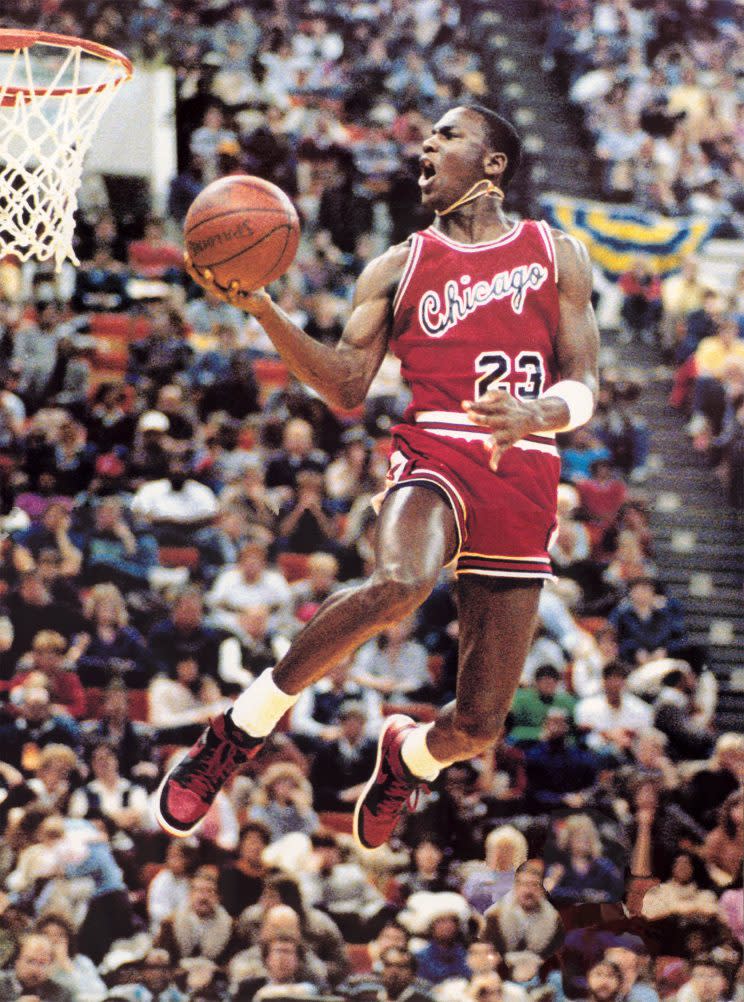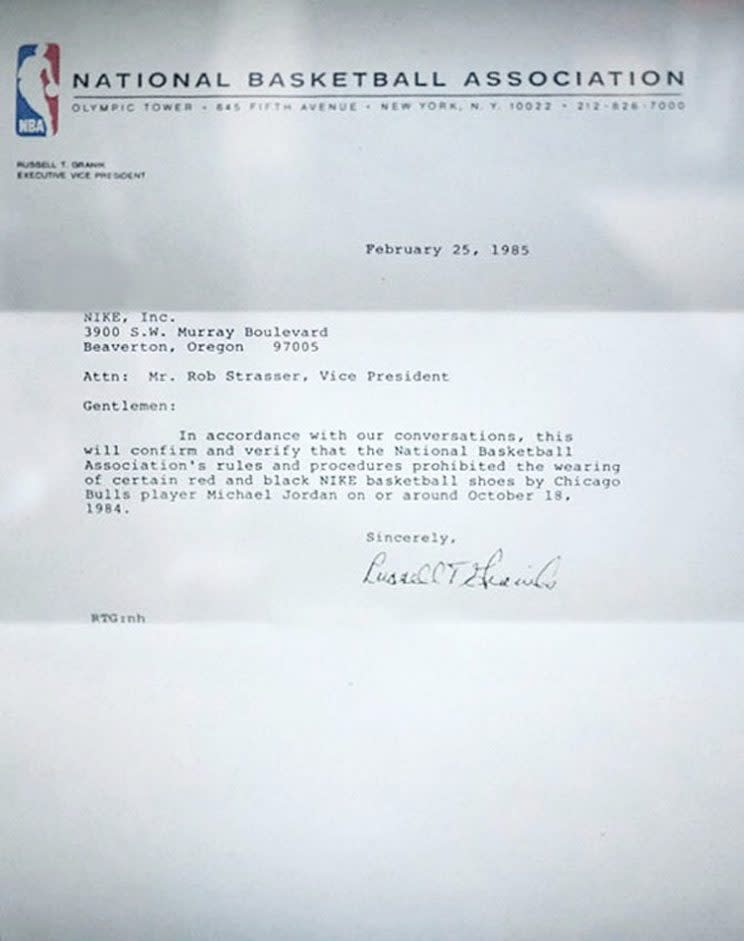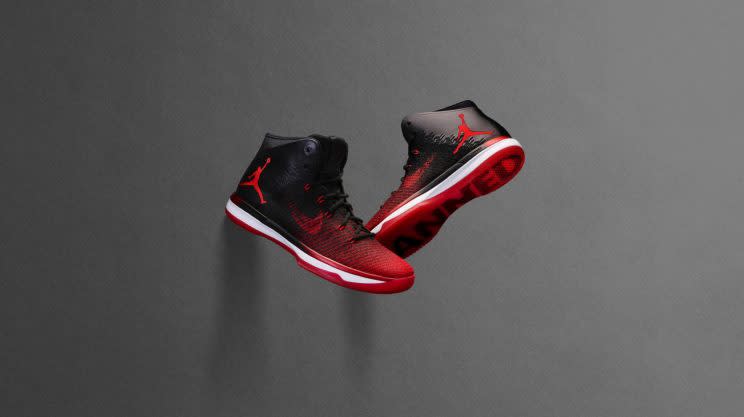The true story of the 'banned' Air Jordans

The 1980s were simpler times for the sneaker industry. Before the flood of innovations and gimmicks, the biggest sneaker story to hit the NBA came in 1984, when a certain Chicago Bulls rookie defiantly disobeyed the league’s shoe-color rules.
Yes, at the time that was the reality of the league. NBA policy mandated that each player “must wear shoes that not only matched their uniforms, but matched the shoes worn by their teammates.” That policy led to the “51 percent rule” – shoes had to be 51 percent white and in accordance with what the rest of the team was wearing. The rule was finally lifted in the late 2000s.
Of course, players today can wear sneakers loosely based on their uniform colors, regardless of what their teammates wear. Players also have as many as 20 “moment games” throughout the season in which they can break out themed or special-edition shoes for celebratory holidays such as Halloween and St. Patrick’s Day and more meaningful events such as Black History Month and Veterans Day.
But in the ’80s, it was mostly a mundane display of sneakers across the court at any given time.
Right out of the gate as a brash rookie, Michael Jordan had other ideas.
“It’s like a young kid, when your parents say you can’t do something, you want to do it,” Jordan explained in a recent promotional video.
Rather than go along with the tame white and red sneakers that his fellow Bulls took to the court, Jordan donned a black and red edition of the Nike Air Ship for his sixth preseason game, a marquee exhibition matchup at Madison Square Garden against the New York Knicks. He’d later jokingly describe the black and red shoes as having “devil colors.”
While marketing lore would tell you the Air Jordan 1 was the barrier-breaking sneaker that “brought color to the game,” the debut signature shoe was actually still being finalized at the time. It was the strikingly similar Air Ship prototype that was worn during that infamous Oct. 18 game, catching the attention of the league office and prompting a stern letter from then-NBA executive vice president Russ Granik to enforce its “uniformity rule.”
“I felt like I wanted to be different,” Jordan said. “The league said, ‘Well, we’ve gotta stop that.'”
“In accordance with our conversations,” Granik wrote in the memo to Nike. “This will confirm and verify that the NBA’s rules and procedures prohibited the wearing of certain red and black Nike basketball shoes by Chicago Bulls player Michael Jordan on or around October 18th, 1984.”

Naturally, as it has done so expertly throughout the years, Nike took advantage of the opportunity and framed an entire marketing campaign around the league’s rules. The company later launched a series of commercials that censored Jordan’s black and red sneakers, and it worked to perfection as kids rushed to purchase the then-$65 basketball shoe.
The Air Jordan line, of course, took on a life of its own and rode the trajectory of Jordan’s star power throughout his dominant Hall of Fame career. More than 30 years later, the Jordan Brand – within the Nike Inc. umbrella – is earning escalating revenues of more than $2.3 billion annually.
Nonetheless, there’ve been a few cases of revisionist history ever since, depending on which banned marketing campaign you point to. Nike has often said that Jordan was fined $5,000 per game for wearing the black and red Air Jordan 1 on court, a fine that the brand gladly paid. The problem: he never wore the shoes in question during an official game. He stylishly wore them once, while wearing gold necklaces, in the 1985 Slam Dunk Contest, and opted instead for his still-brash white, red and black shoes for the remainder of his rookie year and into his second season.
This week, Nike will unveil the Air Jordan 31, its newest statement-level annual game shoe that will be worn by Jimmy Butler and Carmelo Anthony at the 2016 Olympics in Rio de Janeiro.
Unlike the previous 29 Air Jordan designs, it’s the first Air Jordan sneaker since the inaugural one to incorporate the Swoosh logo along the side of the shoe. The new iteration will also be released in each of the debut Air Jordans’ iconic color ways and is surrounded by a marketing campaign that retells the story of the Air Jordan 1 being banned. The storyline celebrates the ushering in of bold hues that would go on to transform the league’s footwear for the foreseeable future.
That banned campaign may only be loosely based in fact, but the shoe’s overall impact on the industry and the league has lived on, sparking the inspiration for yet another Air Jordan launch.




